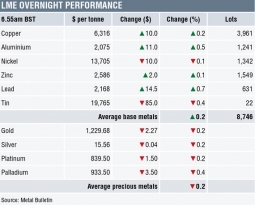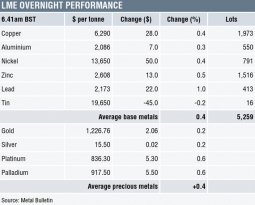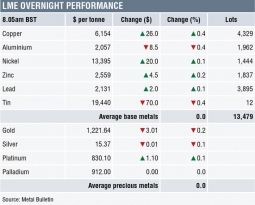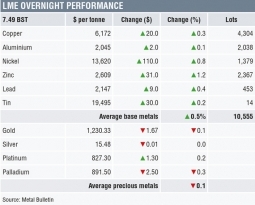The spot gold price slipped under $1,160 per oz during Asian trading hours on Thursday December 1 following the overnight release of stronger-than-expected US economic data.
The spot gold price was recently quoted at $1,169.15/1,169.45 per oz, down $3.35 on the previous close. Trade has ranged from $1,162.05 to $1,173.95 so far. 1162.05, the lower end is the lowest since February 5.
In US data released Wednesday, the ADP non-farm employment change – a precursor to Friday’s blockbuster US jobs report – showed 216,000 Americans joining the labour market in November, besting the forecast of 161,000 and indicating that the labour market remains healthy.
October US personal income rose 0.6% month-on-month, above expectations of 0.4%, though personal spending grew 0.3%, below forecast of 0.5%. The Chicago November PMI was at 57.6, the highest reading since January 2015, while core PCE price for October was in line with consensus at 0.1%.
The recent rash of positive data is expected to produce higher rates when the US Federal Open Market Committee (FOMC) meets in a few weeks – it would be the first rate hike since December 2015.
Market participants currently see a 94% chance of a US rate hike in December, according to the CME FedWatch Tool.
“We expect lower lows [for gold] in December until the Fed meets on December 13-14. Although we expect the Fed to raise rates at the meeting, the message it delivers could surprise on the dovish side, highlighting key downside risks to the US economic outlook. This could give gold a boost, hence our neutral short-term view [of 1-3 months],” Boris Mikanikrezai, a Metal Bulletin Research analyst, said.
“We expect gold strength to resume late in the first quarter of 2017 when the market starts to express doubts about the success of Trump’s policies. We are constructive over the medium term [in 3-6 months],” he added.
In other commodities, the Brent crude oil spot price hit as high as 52.33 on Wednesday, the highest since October 20 after OPEC members, for the first time in eight years, agreed on a production cut which will curtail output to 32.5 million barrels per day. The agreement is expected to be implemented in January and will be in place for six months.
Issues remain around adherence to the agreement, the involvement of non-OPEC members like Russia, as well as reaction from the rest of the industry like US shale oil – there is a risk higher oil prices could reactivate more dormant shale oil production, ANZ Research said on Thursday morning.
The Brent crude oil spot price was recently at $51.87 on Thursday, up 0.76% from its previous close.
In other data, China’s official manufacturing PMI was at 51.7 in November, according to data announced by the National Bureau of Statistics (NBS) on Thursday. The figure was better than market forecast of 51 and October’s reading of 51.2. An above 50 reading signifies expansion, and below, contraction.
This was the highest reading in two years amid improving production and demand, expansion in consumer goods manufacturing, growth in high technology manufacturing, and improvements in imports and exports, the NBS said.
The Caixin manufacturing PMI for November came in at 50.9 in line with expectations but lower than October’s reading of 51.2.
Though the November PMI came in lower than October’s figure, it nonetheless marked the second-highest reading in two years, indicating the manufacturing industry continued to pick up steam, Zhong Zhengsheng, Director of Macroeconomic Analysis at CEBM Group said.
“The Chinese economy continued to improve in November, although it lost some momentum compared to the previous month. Inventory and employment data also showed the foundation of growth is not solid yet and investors have to remain vigilant about the risk of a downturn in coming months,” he added.
The official PMI is more focused on large state-owned firms, while the independently surveyed Caixin PMI is closely watched for conditions among the country’s private sector.
China’s non-manufacturing PMI, which represents the service sector, came in at 54.7 for November, up from 54.0 in October.
US data due later on Thursday includes Challenger job cuts, weekly unemployment claims, final manufacturing PMI, ISM manufacturing PMI, construction spending and ISM manufacturing prices.
In currencies, the US dollar index fell 0.15% to 101.41 recently on Thursday.
In equities, the Shanghai Composite gained 0.52% to 3,267.05 so far today.
In the other precious metals, the spot silver price decreased $0.075 to $16.41/16.43 per oz. Platinum at $907/912 per oz was up $2, while palladium rose $8 to $771/776 per oz.
On the Shanghai Futures Exchange, gold for June delivery was recently at 267.55 yuan ($39) per gram, and the June silver was at 4,111 yuan per kilogram.
The post Gold slips under $1,160/oz after strong US data appeared first on The Bullion Desk.
Read More
Source: Bullion Desk News








